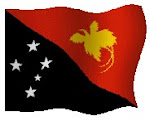Five year development plan to create
approximately 315,200 jobs in PNG’s biggest nation building program in its
history
The Prime Minister Sir Michael Somare said
the 2011 budget to be brought down in parliament next week will represent the
start of the MTDP (Medium Term Development Plan) for the first five years to
2015. Without pre-empting initiatives to be
announced in the budget, I would like to lay out for the nation the overall
direction being planned for the economy. Under the MTDP, the government is targeting
development expenditure of K36 billion over five years to create an additional
315,200 jobs throughout PNG by 2015.
Sir
Michael said the MTDP was also the first five-year stage in the Government’s
broader strategy of the 20-year Development Strategy Plan (PNGDSP) and
realisation of the Vision 2050 program, which provides the overall direction of
PNG’s development initiatives for the next 40 years.
“These
programs collectively form the building blocks for economic development and
prosperity of our nation for future generations,” Sir Michael said.
“The
government has every confidence in the integrity and efficacy of the Medium
Term Development Plan and is very excited to be announcing this significant
allocation of funds which will directly increase the standard of living of
every PNG citizen,” he said.
“Importantly,
the plan will aim to achieve an average economic growth of 8.5 per cent a year
which will result in a healthy rise in the average GDP per person from K3430 in
2010 to K4638 by 2015,” the Prime Minister said.
“The
MTDP now becomes the cornerstone for all national, sectoral, provincial,
district and local government plans. It
provides cohesion, direction, rigor, deliverable targets, measurability and
accountability for all sector development activities.
Above
all, it is a program that enables the whole nation to pull together in a team
effort to realise Vision 2050.
“It
enables those tasked with delivering specified results to see clearly where
they fit into the overall program, and to appreciate how their efforts will
drive successful local and national outcomes. It generates a national ownership
of our future growth and success.”
“The most significant aspects of the MTDP include:
- The
upgrading of 16 national priority roads, construction of 16 ‘missing link’
roads and construction of four additional Economic Corridor national roads;
- The
construction of 315 new aid posts around the country in line with targets set
for 2030 under the DSP. The Plan requires the Department of Health to hire 50 additional
doctors and 787 nurses by 2015.
- In
the education sector, 1,678 new primary and secondary schools will be built across
the nation in every province with more than 9,800 teachers to be recruited in
the next five years;
- In higher education about 21,500 university
places will be created, 6,800 technical and business college places, 8,000
teacher places, 5,000 nursing places, 3,700 vocational training institution
places and improved access to internet and communication technologies and K1.1
billion will be spent to improve the law and order situation.
The
Medium Term Development Plan has undergone extensive planning and meticulous
measuring to ensure its accuracy in projections and forecasts, using the
Government’s sophisticated PNGGEM economic modelling software by the Department
of National Planning and Monitoring.
Job
creation within the MTDP is expected to be dramatic with approximately 87,300
jobs created by the end of next year and 315,200 more Papua New Guineans who
will have jobs by 2015.
Sir
Michael said, “About 239,000 of these government and private sector jobs will
be in the ‘urban formal’ sector with most of the balance representing
additional rural employment at the ‘informal level’ in a village environment.
“More
than 207,000 jobs are expected to be created in urban based industries and in
mining, as well as in services – particularly in construction.
“Through careful fiscal management, the
Government has lowered the country’s debt to GDP ratio in the past five years. With
our strategic and measured economic road maps – the PNGDSP and the MTDP – we
will continue this growth of the economy from 2010 to 2015 and onwards,” he
said.
Sir
Michael said that since 2002, the Government had brought the debt to GDP ratio down
to less than 30% from an unsustainable high of 72%.
“As
part of laying the foundation for growth, the Government will ensure fiscal and
monetary stability is maintained, land is sufficiently unlocked for
development, law and order problems are stabilised, and quality infrastructure
networks are established to connect rural populations to markets and services,”
he said.
“Similarly,
increasing competition, enhancing national primary and secondary education
completion, transportation and the provision of key public utilities of electricity,
clean water and sanitation are the Government’s priorities in the first MTDP
period from 2011-2015.”
Underpinning
the Government’s success in implementing these priorities in the first and
subsequent MTDP’s is the public sector’s performance and governance issues. The
MTDP sets key performance criteria for the public sector, making Government
more accountable at a senior level than before.
Collectively
by 2015, K21 billion would be financed by the Government, approximately K5.7
billion by donors and about K5 billion by other stakeholders such as the
churches and NGOs.
About the Medium Term Development Plan
The Medium Term Development Plan is a strategic
five-year plan to optimally spend projected development funds totalling K36
billion. The MTDP envisages the creation of more than 315,000 jobs throughout
every Province in the next five years, as well as greatly improved access to
public health, education and other services. The MTDP is part of the
Government’s 20-year Development Strategic Plan (PNGDSP) which aims to position
Papua New Guinea as a prosperous middle-income country by 2030. The plan aims
to achieve an average economic growth of 8.5 per cent a year with the average
GDP per person increasing from K3430 in 2010 to K4638 by 2015.












0 comments:
Post a Comment